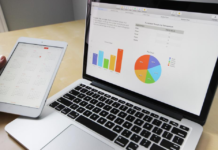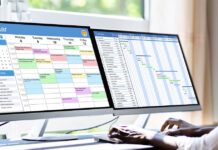In 2022, data observability will be a must-have for every data team. But what is it and what does a good approach look like?
Across industries, companies in today’s rapidly changing workforce are relying on data more than ever. But while our ability to collect, store, and visualize data has kept up with the needs of modern teams, we still face a complex challenge: assessing the quality and integrity of the data itself. Companies need data that’s recent, complete, and within accepted ranges in order for it to be useful to the broader business, from informing sales forecasts to powering marketing campaigns.
When it comes to using data to drive organizational outcomes, companies might face a plethora of obstacles. Broken dashboards and reports resulting in inaccurate data-powering digital services are all too common obstacles for data engineers. Even the best-thought-out strategic plans can fail if the data your cloud pushes downstream isn’t accurate.
So, what turns good data bad? In our opinion, this boils down to three key reasons.
First, the rapid growth of data teams within organizations definitely plays a role as more leaders recognize the importance of data in decision making. As businesses hire more data analysts, data scientists, and data engineers, there are bound to be internal growing pains and coordination issues—and if you’re not proactive, you could compromise the quality of your data.
Second, data comes from so many different internal and external sources that organizations are bound to face challenges in upholding the data’s integrity, especially as data sources can change unexpectedly without any notice.
And finally, data pipelines are becoming increasingly complex, with multiple stages of processing and non-trivial dependencies between various data assets. Even a small change made to a single data set could have far-reaching consequences.
When it comes to catching and even preventing bad data from corrupting your perfecting good pipelines, you need to understand what broke and who was impacted. That’s where data observability comes in.
What is data observability?
The inspiration for data observability stemmed in part from application performance monitoring in the field of software engineering. Tools like New Relic and Datadog have made it easier for organizations to assess the health and user experience of software applications over the last decade.
We should apply the concept of observability and reliability to our data systems in order to prevent or fix what we refer to as data downtime, time periods when data is missing, inaccurate, or partial. The effects of data downtime compound rapidly in complex ecosystems.
Data observability differs from existing solutions as it extends beyond traditional data quality monitoring and anomaly detection. It eliminates data downtime by leveraging automated monitoring, alerting, and triaging to assess data quality and identify discoverability issues. This benefits customers and data teams alike as you get healthier pipelines and greater data team productivity. By understanding the root cause of your data downtime, you can fix data issues before they surface downstream.
What makes for a good data observability solution?
To simplify the concept of data observability even further, we can break it down into five key pillars: freshness, distribution, volume, schema, and lineage. To determine the freshness of your data, you should ask: How up to date are your data tables? How often are they updated? Remember that stale, outdated data can lead to wasted time and money, making freshness particularly important.
Good data must also be within an accepted range, a concept known as distribution. This is a function of your data’s possible values and can inform whether tables can be trusted based on what can be expected from your data. To assess the quality of data, we also look at how complete your data tables are and whether your data sources are healthy (volume).
Changes in the organization of your data (known as schema) can also indicate that data is broken, so keeping a close eye on who modifies data tables and when is important to data observability. Finally, lineage tells you where broken data exists and who is generating and accessing that data.
A good solution also provides end-to-end coverage that allows you to track downstream and upstream dependencies for data sets at each stage of the data pipeline. With data observability, you can automatically monitor data at rest without extracting it from your data store, which holds benefits for data security and compliance. Such a solution is automated and doesn’t require you to write new code or modify your existing pipelines to connect to your existing stack.
A good data observability solution also has a security-first architecture, meaning data is monitored even at rest without requiring you to extract it from the data store, enabling you to meet high compliance and security requirements. We also recognize the value of a no-code configuration in a data observability solution. You can use machine learning to automatically learn about your environment and the data it holds, detect and track broken data, and get a birds-eye view of data and the impact of any specific issue, big or small.
Further, data observability means prioritizing metadata management and data discovery. Observability allows you to bring all metadata about a data asset into a single view so you can easily assess the five pillars and determine whether your data is broken. You should also easily be able to conduct a root cause analysis that provides rich context to enable rapid triage and troubleshooting. A good approach goes beyond identifying a data issue but also dives into its causes and its potential impacts, analyzing historical behavior to predict and prevent issues from occurring in the first place.
Moving forward with data observability
Data observability will be critical for modern data teams as it allows an organization to better understand the health of the data in their system, which they can use to make business decisions that drive better strategy and power digital products. As data teams grow, the data systems they use will become more complex, underscoring the need for a way to ensure that this critical asset is reliable no matter how it’s being used across the business.
If you can’t trust your data, your stakeholders definitely can’t trust you.
















